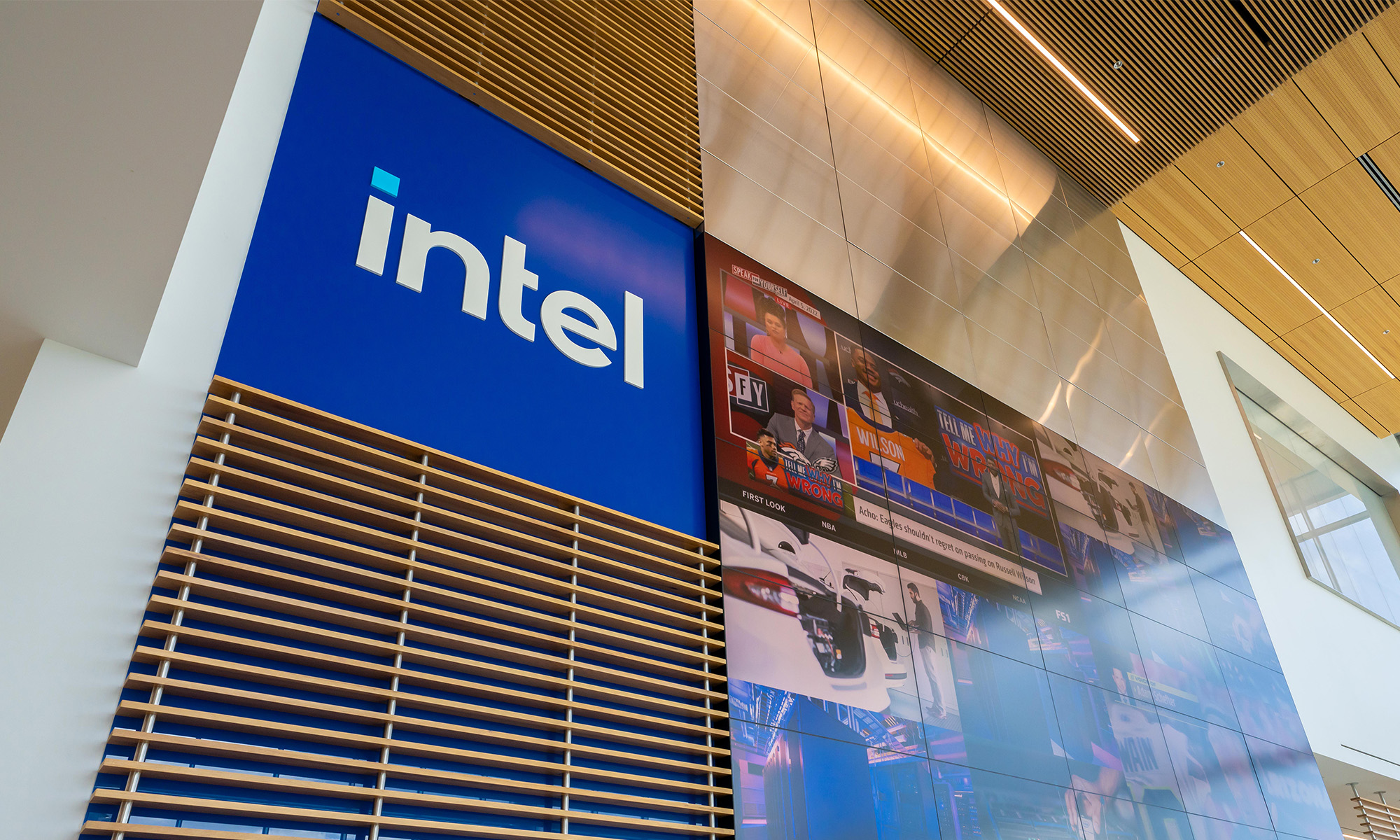These days, chip giant Intel's (INTC 3.38%) primary growth engine is its data center group, or DCG, which the company says "develops workload-optimized platforms for compute, storage, network, and related functions, which are designed for and sold into enterprise and government, cloud, and communications service providers market segments."
Last quarter, Intel's DCG delivered strong results. Revenue hit $5.5 billion, marking a 27% year-over-year increase, and operating income was just north of $2.74 billion, an eye-popping 64.8% surge from a year ago.

Image source: Intel.
What drove these results? Let's take a closer look.
Revenue strength across the board
Intel breaks down its DCG revenue into two sub-segments: platform products and adjacent products. Platform products, Intel says, "incorporate various components and technologies, including a microprocessor and chipset, a stand-alone [system on a chip], or a multi-chip." Everything else falls under the "adjacency" category.
The chip giant reported DCG platform revenue of $5.1 billion, up 26.7% year over year. That growth came as a result of 14% platform shipment growth and an 11% increase in platform average selling prices.
"Customer preference for our highest-performance products continued, with Xeon Scalable at nearly 50% of our mix in the second quarter," Intel Interim CFO Bob Swan said on the company's most recent earnings conference call. Xeon Scalable is the name of Intel's latest data center processor family.
Breaking that down further, Intel said that DCG sales to cloud service providers, enterprise and government, and communications service providers grew 41%, 10%, and 30% year over year, respectively. In recent years, the company's enterprise and government sub-segment has struggled, declining at a 4% compound annual rate from 2014 to 2017, according to Intel's Rajeeb Hazra, so the 10% growth last quarter (accelerating from 3% growth in the first quarter of 2018) was a sharp improvement.
The company's adjacent products, which include things like network interface cards, silicon photonics, and its recently announced Optane DC Persistent Memory (which finally began first production shipments earlier this month), saw 30% growth in the second quarter -- accelerating rapidly from 16.1% growth in the prior quarter.
Operating leverage in action
Intel's DCG saw strong revenue growth, but operating profit growth of about 64.8% easily outpaced that revenue growth, growing from $1.66 billion to $2.74 billion. Here's a reproduction of the walk that Intel provided in its most recent quarterly filing to show how the company went from $1.66 billion in operating income in the second quarter of 2017 to $2.74 billion in the second quarter of 2018:
| (In Millions) | DCG Operating Income Walk |
|---|---|
| $2,737 | Q2 2018 DCG operating income |
| $1,005 | Higher gross margin from DCG platform revenue |
| $100 | Lower factory start-up costs, primarily associated with the 10nm process technology |
| ($120) | Higher DCG platform unit costs |
| $91 | Other |
| $1,661 | Q2 2017 DCG operating income |
Data source: Intel Q2 2018 form 10-Q filing.
The main driver of the increase in operating profit is clearly the fact that the company's DCG platform revenue grew substantially year over year, although the company did see a benefit from "lower factory start-up costs," as well as from an unspecified "other."
Something to keep in mind is that Intel reported that its overall operating expenses during the second quarter of 2018 were about flat year over year, with a $109 million increase in research and development spending being offset by a $125 million reduction in marketing, general, and administrative expenses. While some of that $109 million increase in research and development may have been used by DCG (Intel, in its 10-Q, said that part of that increase was due to "higher investments in data-centric businesses"), it seems reasonable to assume that DCG's operating expenses simply didn't move much year over year.
Flattish operating expenses, coupled with a surge in gross margin dollars, is a recipe for significant operating profit growth, as Intel's DCG results in the second quarter showed.






